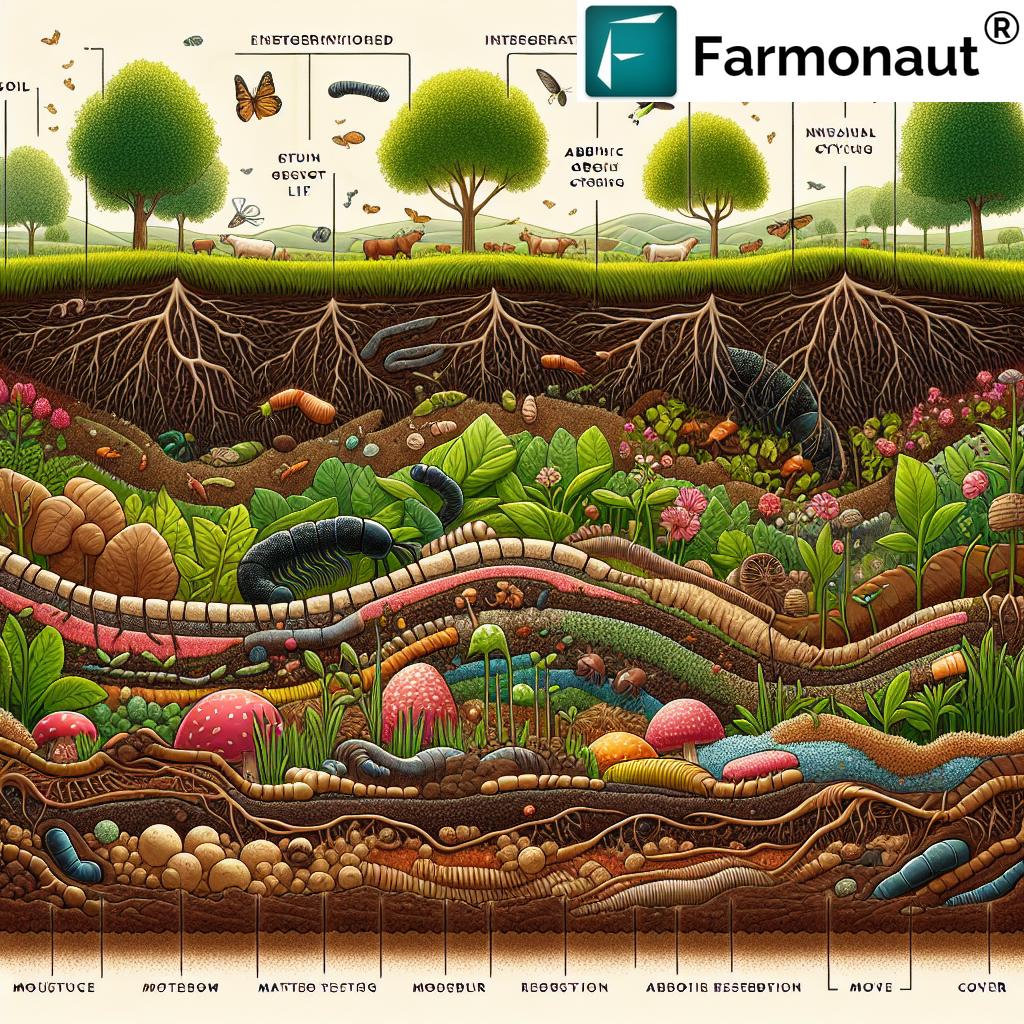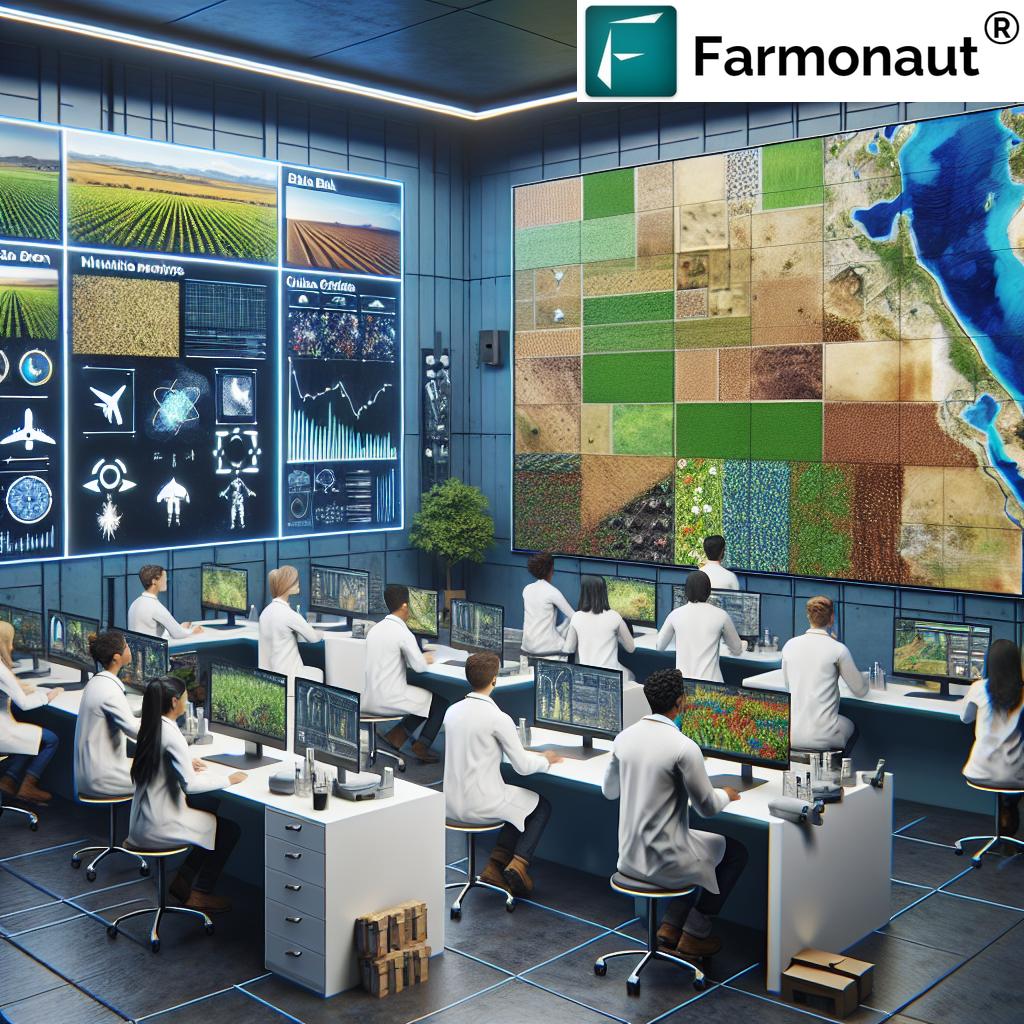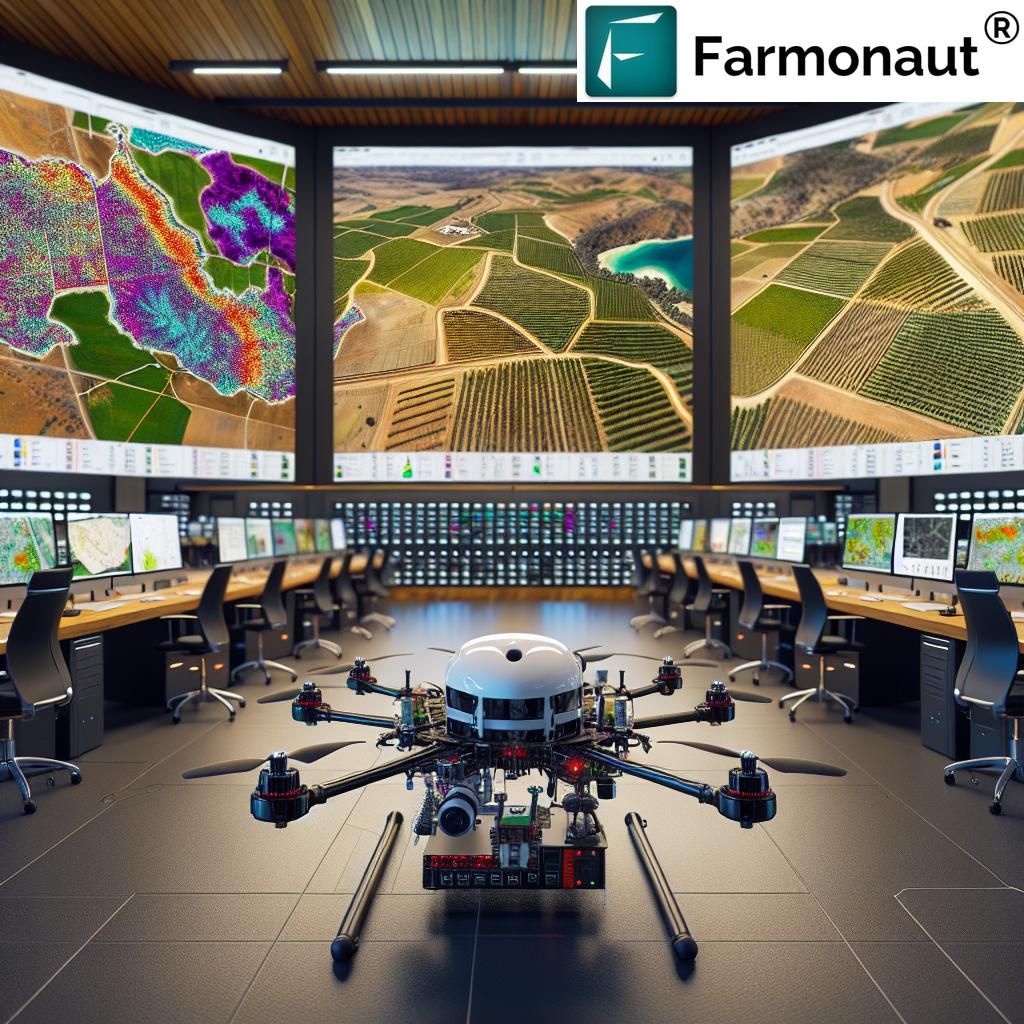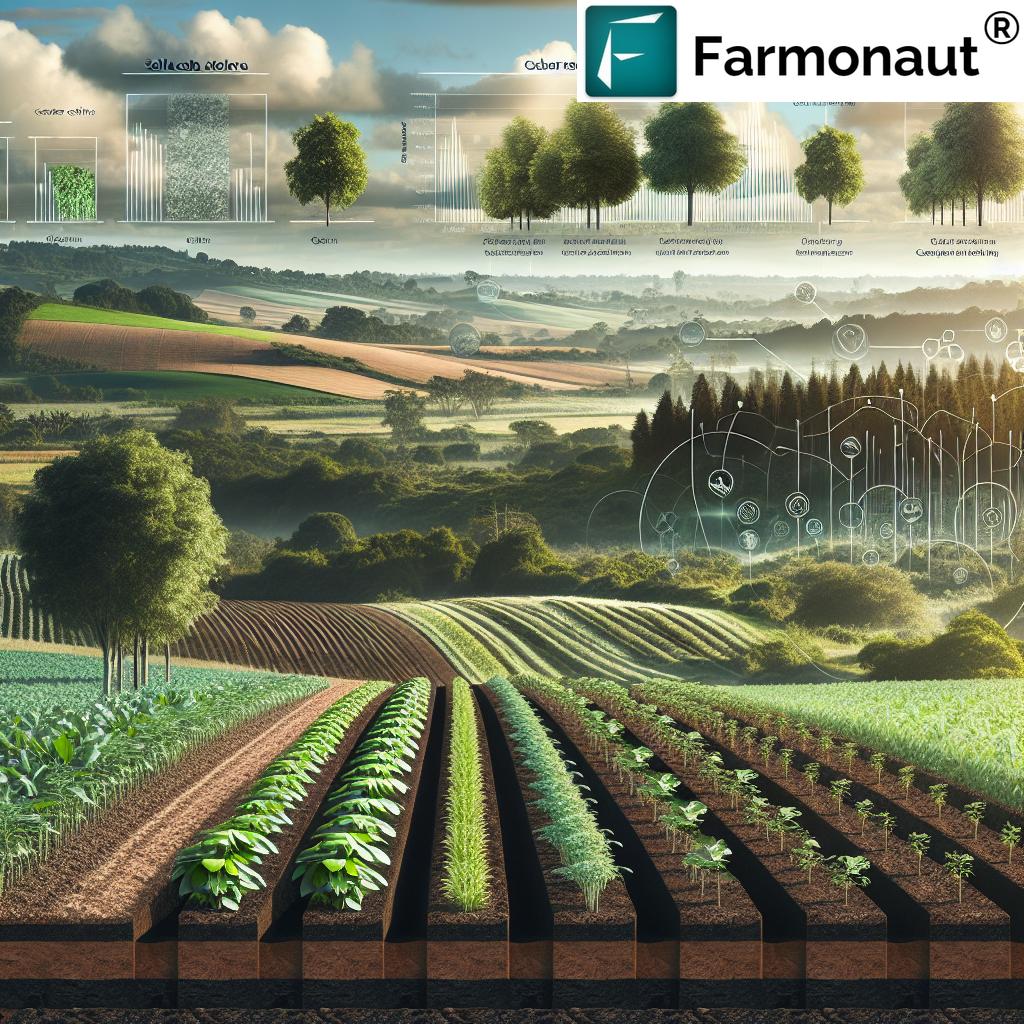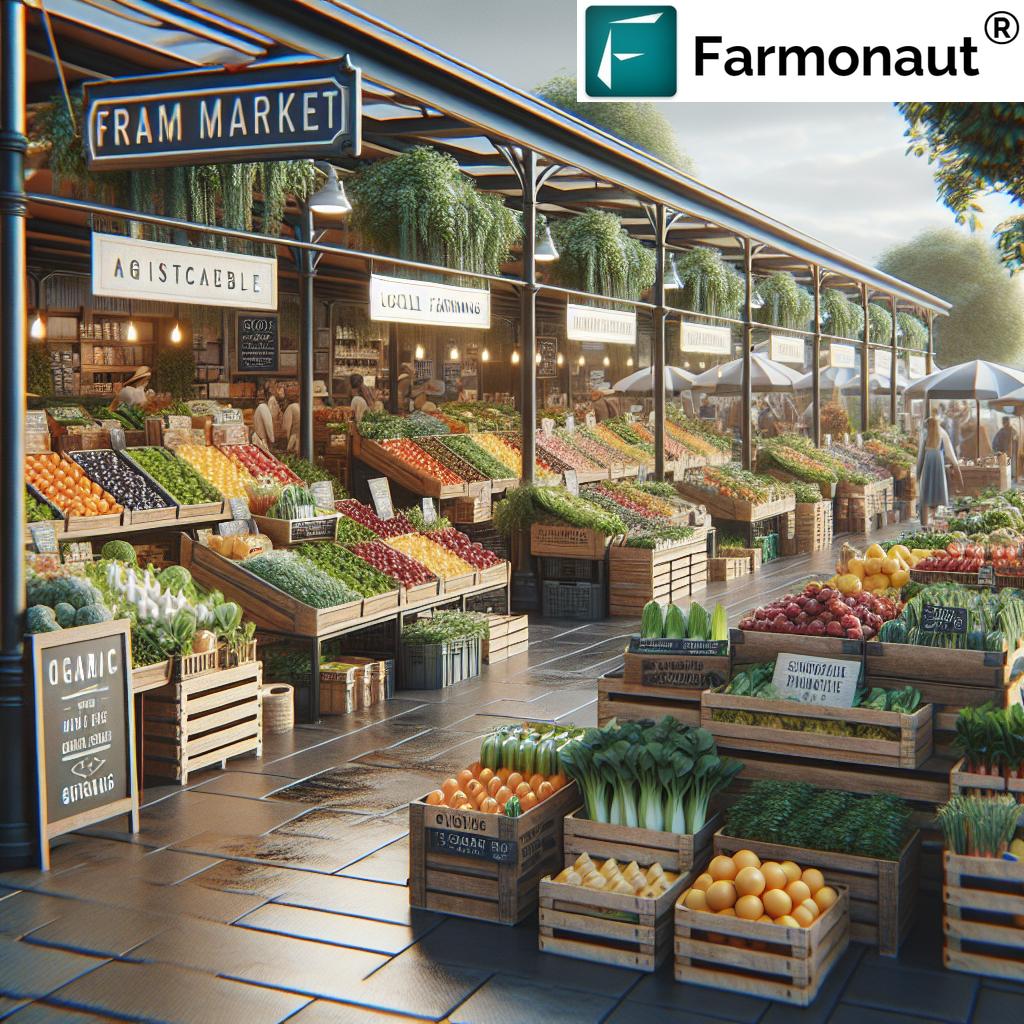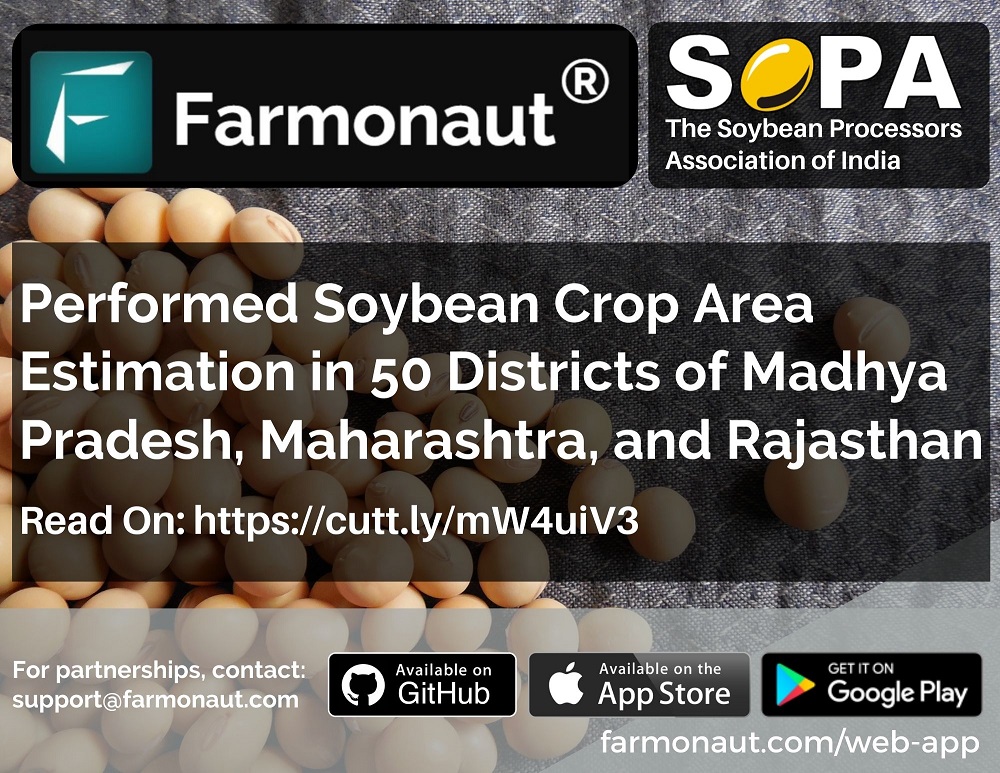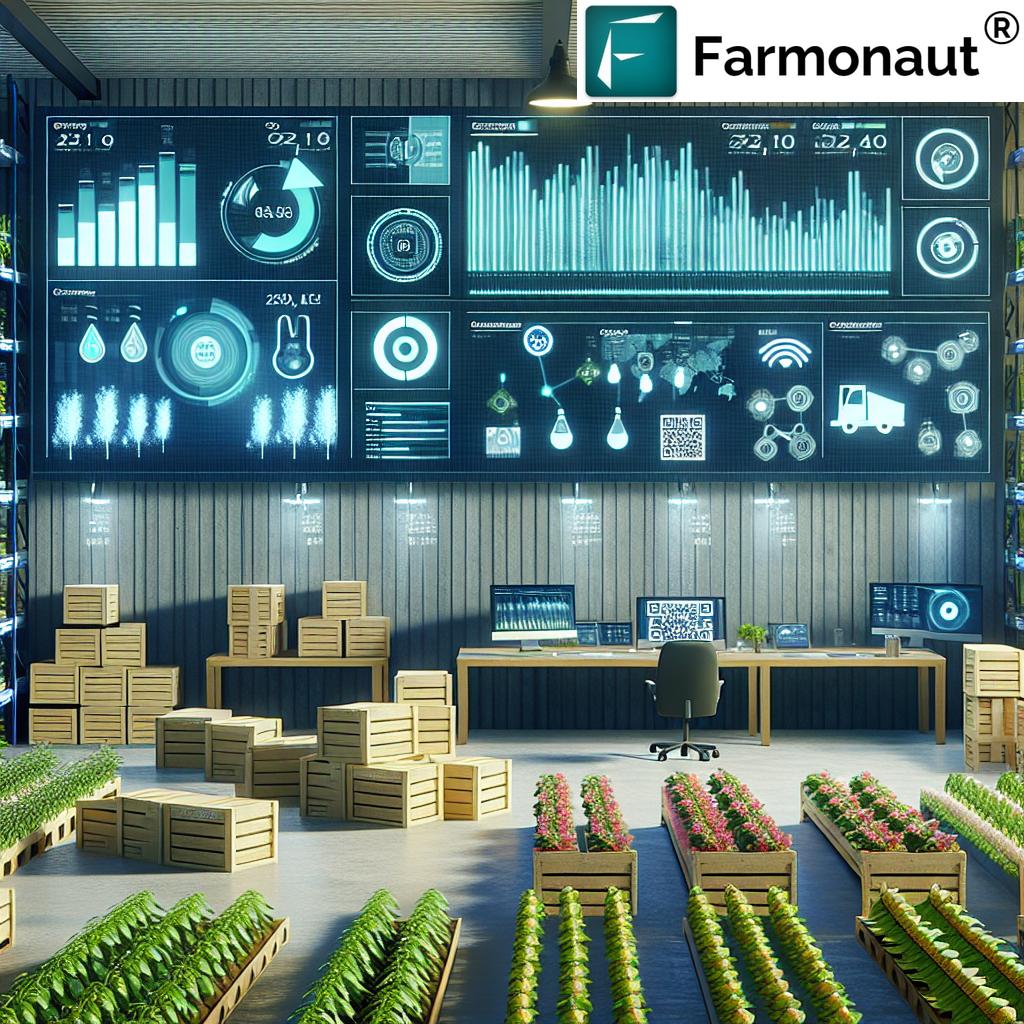Regenerative Agriculture: 7 Soil Hacks You Must Try!
Table of Contents
- Introduction
- Historical Context of Regenerative Agriculture
- Core Principles of Regenerative Agriculture
- Top 7 Regenerative Soil Hacks You Must Try
- Comparative Practices Impact Table
- Harnessing Technology for Regenerative Agriculture
- Environmental and Economic Benefits of Regenerative Systems
- Challenges and Considerations in Regenerative Farming
- Global Initiatives and Future Pathways
- Farmonaut Subscription Details
- Frequently Asked Questions (FAQ)
- Conclusion
“Regenerative agriculture can increase soil organic matter by up to 21% in just five years.”
Introduction: The Regenerative Agriculture Revolution
In the face of climate change, resource depletion, and environmental degradation, farming communities are seeking solutions that prioritize the long-term health of our food systems and natural resources. Regenerative agriculture stands at the forefront of this movement, offering a holistic approach that goes beyond sustainability to truly restore ecosystems. By harnessing the principles of regenerative agriculture, we can improve soil health, foster biodiversity, optimize water management, and build more resilient, sustainable societies.
Within this blog post, let’s journey through the roots of regenerative agriculture, uncover its key practices, and spotlight the top 7 soil hacks that every forward-thinking farmer, agribusiness, and policymaker must consider. We’ll also explore how cutting-edge technology—like the solutions offered by Farmonaut—can accelerate our progress towards truly transformative, data-driven farming.
Why Focus on Soil Health and Biodiversity?
Globally, soils provide the literal foundation for food security and ecosystem resilience. Healthy, living soils drive nutrient cycling, carbon sequestration, and support the diverse web of life within and above ground. Agricultural practices that respect natural systems not only yield healthier crops, but also boost farm profitability and help combat climate crises. As we delve into regenerative practices, you’ll discover hands-on soil hacks and scientific strategies for unlocking the true potential of your land—whether you manage a family farm, cooperative, or large agribusiness.
Historical Context: Legacy and Evolution of Regenerative Agriculture
The roots of regenerative agriculture are deeply rooted in traditional and indigenous methods that have celebrated harmony between humans and the land for generations. Across Africa, Asia, and the Americas, ancient cultures emphasized practices like cover cropping, rotations, and careful water management—creating landscapes that weathered climate extremes and remained bountiful.
In the 1980s, the Rodale Institute helped to popularize the term “regenerative agriculture.” By advocating for farming systems that not only sustain, but regenerate our natural resources, they established a new scientific framework for proactive ecosystem restoration—a contrast to extractive, conventional models that erode soils and degrade biodiversity.
Today, global initiatives, policy changes, and market demand are ushering in a new era for regenerative agriculture—one informed by both historical context and pioneering research.
Core Principles of Regenerative Agriculture
The principles of regenerative agriculture function as guiding stars for farmers, researchers, and policymakers. When consistently applied, they underpin robust, resilient food systems and put us on a path to soil regeneration, increased biodiversity, and ongoing prosperity.
1. Minimize Mechanical Soil Disturbance
- Eliminate or reduce tillage to protect soil structure and microbial communities.
- Avoid exposing soil to erosion by maintaining residue mulch or cover crops.
2. Maximize Soil Coverage
- Use mulching, organic matter, or dense living plants to cover and protect soil from erosion and moisture loss.
- Maintain permanent pastures and cover cropping wherever practical.
3. Foster Plant and Crop Diversity
- Practice crop rotation and diversity: alternate crop types and integrate intercropping to break pest cycles, build resilience, and feed a rich diversity of beneficial soil organisms.
- Encourage biodiversity in agriculture by mixing plant species and cover types.
4. Keep Living Roots in the Soil Year-Round
- Support nutrient cycling and stabilize soil with ongoing living roots—made possible with integrated cover crops and perennials.
5. Integrate Livestock Thoughtfully
- Integrating livestock into farming systems, specifically with managed grazing, adds fertility and mimics natural ecosystem processes for greater biodiversity and soil health.
6. Promote Soil Biological Activity
- Boost microbial and macro-organism populations with compost, bio-stimulants, and by reducing chemical inputs.
7. Employ Holistic Farm Management
- Think systemically: integrate crops, livestock, trees, water, and land management into one cycle.
- Adapt to the rhythms of nature for sustainable farming practices.
Top 7 Regenerative Soil Hacks You Must Try!
Ready to bring the regenerative revolution to your farm, business, or organization? Here are our seven essential, research-backed soil hacks, each mapped directly to the core principles of regenerative agriculture.
“Cover cropping boosts soil biodiversity by supporting over 30% more beneficial microorganisms compared to conventional farming.”
1. Cover Cropping: The Regenerative Shield
Cover cropping is the practice of planting non-harvested crops—like clover, vetch, rye, or radish—during or between main cropping cycles. This soil hack offers multiple cover cropping benefits:
- Protects soil structure from erosion and compaction
- Enhances organic matter, feeding microbial life crucial for nutrient cycling
- Suppresses weeds, reduces disease risk, and supports soil health improvement
- Improves carbon sequestration in soil by keeping ground green and living roots active
- Boosts biodiversity in agriculture by offering habitat and food for beneficial insects and worms
By rotating or mixing different cover crop species (such as legumes with cereals), we further diversify on-farm biology and build resilient soils for future generations.
Farmonaut Tip: Need real-time insights to plan your cover cropping schedule? Farmonaut’s satellite crop health monitoring offers NDVI (Normalized Difference Vegetation Index) mapping and AI-powered advice for cover crop timing and effectiveness. Access our Farm Management App or download for Android.
2. No-Till and Reduced Till Farming
One of the biggest causes of soil degradation is repeated mechanical disturbance—especially deep plowing (tillage). Adopting no-till or reduced-till systems:
- Preserves natural soil structure and reduces long-term erosion risk
- Promotes thriving microbial communities and soil macro-fauna like earthworms
- Decreases water runoff and enhances infiltration, making droughts less destructive
- Sequesters more carbon due to fewer emissions and greater organic accumulation
- Cuts input costs by reducing time, labor, and fuel invested in mechanical operations
No-till is especially powerful when combined with cover cropping and mulching.
Farmonaut Insight: Use our AI-driven fleet management solution to efficiently manage machinery, monitor operations, and assess the results of your reduced-tillage initiatives. All data is accessible via web or app—start for free!
3. Compost and Organic Input Integration
Boosting soil fertility isn’t about pouring on synthetic chemicals, but nurturing a living soil ecosystem. Adding compost, manure, biochar, or crop residues:
- Directly increases soil organic matter and promotes microbial diversity
- Enhances water retention, leading to less irrigation requirement
- Reduces dependence on external, non-renewable inputs
- Encourages nutrient cycling and enhances soil health improvement
Regular organic amendments are vital in regenerative food systems because they deliver energy for the “soil food web.”
Farmonaut Resource: Trace every input—organic or synthetic—applied on your fields using our Blockchain-based Product Traceability system. This transparency ensures healthier, eco-friendly production and builds trust with eco-conscious buyers.
4. Diverse Crop Rotations and Intercropping
Instead of the monoculture trap, crop rotation and diversity ensure no single pest or disease dominates and that soil nutrients don’t become imbalanced. Intercropping means growing two or more crops together (e.g., maize and beans).
- Prevents depletion of specific nutrients (by alternating legumes with cereals, etc.)
- Diminishes risks of pest and pathogen outbreaks
- Supports biodiversity in agriculture (plants, insects, microbes)
- Boosts yields and farm resilience
Complex rotations and intercropping systems mimic nature’s patterns—the basis for robust, climate-resilient agriculture.
Farmonaut Tech: Map, plan, and monitor your field rotations over time using advanced large-scale farm management tools (also available via API: API Access; Developer Docs).
5. Living Mulches and Permanent Soil Cover
Leaving soil bare is an invitation for erosion, evaporation, and weed invasion. Regenerative systems keep soils covered year-round:
- Mat-forming living mulches lower soil temperature and maintain moisture
- Dead mulches (straw, chopped plant residue) reduce evaporation and suppress weeds
- Prevents surface crusting, allowing roots and water to penetrate deeper
Whether you’re mulching with perennial grasses or crop residues, year-round soil coverage is foundational for modern sustainable farming practices.
Farmonaut AI: Monitor soil moisture under mulches and optimize irrigation using the Live Field Analytics in our Farm Management App (iOS version here).
6. Integrating Livestock with Managed Grazing
Modern grazing practices in regenerative agriculture are adaptable “tools” for ecosystem regeneration—not simply a way to maximize animal production. With managed rotational grazing:
- Livestock are moved through pastures to prevent overgrazing and encourage vegetative regrowth
- Manure is distributed evenly, fostering nutrient cycling, organic matter buildup, and improved soil fertility
- Animals break up surface crusts, helping rain infiltrate quickly and deeply
- Rotational systems create habitat complexity, promoting biodiversity in agriculture
Integrating livestock into farming systems shouldn’t mean sacrificing environmental stewardship—in fact, it’s a key strategy for building living soils.
Farmonaut Fleet: Track grazing rotations and manage assets with our fleet and resource management tools—perfect for ranch managers and diversified farm operations.
7. Agroforestry and Perennial Systems
Combining trees or shrubs with crops and/or livestock (agroforestry) or establishing perennial-based systems:
- Brings deep-rooted species that pump up nutrients, stabilize soils, and absorb carbon
- Offers windbreaks to reduce evaporation and crop stress
- Builds a multi-layered habitat ideal for biodiversity in agriculture
- Increases farm productivity and resilience over decades
By fostering perennial polycultures, silvopasture, or alley cropping, we draw from the complexity of forests to create productive, climate-adaptive farms.
Farmonaut Advisory: Use the Jeevn AI advisory system to optimize perennial and agroforestry integration, get localized weather alerts, and maximize long-term carbon capture. Learn more about our carbon footprinting tools for agroforestry practitioners.
Comparative Practices Impact Table: Regenerative Soil Hacks at a Glance
| Hack Name | Principle Applied | Estimated Soil Health Improvement (%) |
Estimated Biodiversity Boost (%) |
Carbon Sequestration Potential | Additional Environmental Benefits |
|---|---|---|---|---|---|
| Cover Cropping | Coverage, Living Roots, Diversity | +20% | +30% | High | Prevents erosion, suppresses weeds, retains moisture |
| No-Till Farming | Minimize Disturbance | +18% | +15% | High | Reduces fuel/energy use, enhances water retention |
| Compost & Organic Inputs | Enhance Organic Matter & Cycling | +23% | +20% | Medium | Improves soil fertility and drought resilience |
| Diverse Rotations & Intercropping | Crop Diversity, Biodiversity | +15% | +28% | Medium | Reduces pest cycles, enhances pollination |
| Mulching & Permanent Cover | Coverage, Minimize Disturbance | +17% | +10% | Low | Reduces evaporation, prevents compaction |
| Managed Grazing | Livestock Integration | +19% | +20% | Medium | Improves fertility, distributes nutrients, increases resilience |
| Agroforestry & Perennials | Perennial Roots & Layers | +25% | +35% | High | Controls erosion, buffers microclimate, stores carbon long-term |
Harnessing Technology for Regenerative Agriculture
While regenerative principles are timeless, we now have unprecedented tools—from satellite monitoring to AI-driven analytics—to magnify and accelerate their impact. This is where Farmonaut comes in, bridging the gap between ancient wisdom and digital precision for modern sustainable farming practices.
Satellite-Based Crop Health Monitoring
- Utilize real-time NDVI and soil moisture data to optimize cover cropping schedules, manage irrigation, and spot stress early.
Farmonaut’s app ecosystem (Web, Android, iOS) provides dynamic mapping and historic trend analytics, putting science-driven decisions in the palm of your hand.
Jeevn AI Advisory System
Leverage AI for hyper-local weather forecasts, soil moisture insights, crop rotation strategies, and input recommendations—maximizing soil regeneration while optimizing yield.
Blockchain-Based Product Traceability
Secure, transparent tracking from farm to market. This is essential as global buyers and regulatory agencies demand proof of sustainable, regenerative production. See how traceability builds market access: Farmonaut Traceability Solutions.
Carbon Footprint Tracking for Regenerative Farms
Get real-time data on emissions and sequestration by plot, optimizing your farm to be a carbon sink rather than a source.
Want to enhance your climate marketing or enable carbon credits? Explore the advantages at Farmonaut Carbon Footprinting.
Fleet, Resource, and Large-Scale Management Tools
From fleet management to large-scale farm management, track operations, increase efficiency, and reduce ecological impact—all with satellite validation, customizable API access (API; Docs).
Financial Access & Resource Verification
Applying for green loans or insurance? Farmonaut’s crop loan and insurance verification streamlines access and reduces fraud with satellite verification, supporting regenerative ag investments at all scales.
Environmental and Economic Benefits of Regenerative Systems
The shift from conventional to regenerative agriculture delivers numerous, verifiable benefits:
- Soil Health Improvement: More organic matter, better soil structure, improved porosity, and robust microbial activity.
- Carbon Sequestration in Soil: Healthy soils act as powerful carbon sinks, combatting climate change by capturing atmospheric CO2.
- Biodiversity in Agriculture: More life below and above ground means higher resilience, natural pest control, and less need for external chemical inputs.
- Water Retention and Management: Regenerative soils hold more water and are less prone to erosion, flooding, or drought losses.
- Reduced Input Costs: Lower reliance on costly fertilizers and pesticides.
- Market Value: Premiums and expanded markets for verified regenerative food products.
Over time, these benefits compound, resulting in more resilient food systems that can weather climate and market shocks while restoring our environment.
Challenges and Considerations in Adopting Regenerative Practices
- Knowledge and Training: Shifting mindsets is essential—farmers may need education, peer learning, and trustworthy data systems (like Farmonaut) to implement new techniques.
- Initial Investments: Equipment for no-till or fencing for managed grazing, for example, can require up-front spending (eventually offset by long-term savings).
- Transition Period: Soil regeneration is a multi-year journey; interim support, monitoring, and local evidence are crucial.
- Market Development: As demand for regenerative products grows, traceability and third-party validation become vital (see Farmonaut’s solutions).
Despite the hurdles, momentum is building across continents—from grassroots movements to policy support from the United States and the European Union. Adopting digital tools can significantly accelerate and simplify the transition.
Global Initiatives and the Future of Soil Regeneration
Worldwide, state, regional, and private sector initiatives are helping to scale regenerative agriculture:
- The USDA’s Partnerships for Climate-Smart Commodities and the EU’s Common Agricultural Policy are investing billions in scaling up regenerative, sustainable farming practices.
- Multi-national corporations are shifting supply chains toward verified regenerative systems to address consumer demand and climate commitments.
- New technology, including satellite-based monitoring, is creating accountability and economic opportunities for pioneering farmers globally.
The global future belongs to those who can combine indigenous knowledge, regenerative core principles, and digital transformation—driving resilient, productive, and environmentally just food systems.
Get Started: Farmonaut Subscriptions for Regenerative Agriculture
Whether you’re an individual farmer, a cooperative, or a large-scale agribusiness, Farmonaut offers affordable, scalable subscription solutions to advance your regenerative journey. Our unified web, Android, and iOS platforms are accessible worldwide, delivering value across crop health, field mapping, resource management, and more.
Check out our transparent subscription options below:
Frequently Asked Questions (FAQ)
What is regenerative agriculture in simple terms?
It’s a holistic approach to farming that restores and enhances the health of soil, biodiversity, and water cycles—going beyond just minimizing harm to actively improving our environment and food systems.
How can regenerative agriculture improve soil health?
By using cover cropping, minimizing tillage, enhancing organic input, integrating livestock, and promoting biodiversity, regenerative systems build organic matter, increase microbial activity, and improve soil structure—making soil more fertile, resilient, and carbon-rich.
What are the economic benefits for farmers?
Farmers benefit from reduced input costs, more stable yields, increased market value (for regenerative products), access to green finance, and healthier, more resilient land long-term.
How does technology like Farmonaut’s platform support regenerative agriculture?
Farmonaut delivers satellite-based crop and soil health monitoring, AI advisory services for smarter decision-making, blockchain-based traceability for transparency, and resource management tools that optimize inputs, reduce risk, and accelerate soil regeneration.
Can regenerative practices help with climate change?
Yes! Regenerative systems sequester carbon in soils and biomass, reducing greenhouse gases and helping agriculture become a climate solution.
What’s the best way to start transitioning to regenerative agriculture?
Begin by selecting one or two key practices—such as cover cropping or no-till—and monitor their impact using real-time data. Farmonaut’s platforms and advice make tracking progress and optimizing practices easier, ensuring your transition is measurable and effective.
Conclusion: Leading the Regenerative Soil Movement
Our journey through the world of regenerative agriculture highlights a powerful truth: by focusing on soil health improvement, biodiversity in agriculture, and carbon sequestration in soil, we can build sustainable and resilient food systems that benefit both the environment and our communities.
From cover cropping to integrating livestock into farming systems, every regenerative hack is a strategic step toward ecosystem restoration and agricultural prosperity. With access to technology—like Farmonaut’s satellite intelligence, AI-driven insight, and blockchain traceability—we now have the power to transform farming at scale, making these time-honored principles of regenerative agriculture mainstream.
Let’s continue to foster collaboration, embrace innovation, and honor the wisdom of traditional, indigenous, and scientific methods. Unified, we can create a future where agriculture is not just less harmful, but truly regenerative.
Explore More: Download Farmonaut today — your partner in affordable, accessible, and sustainable farm management!





